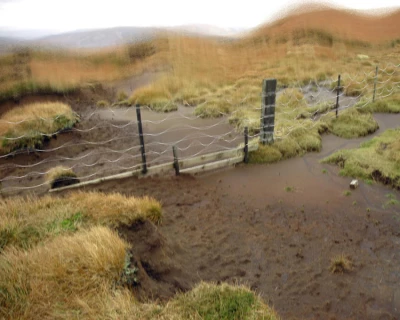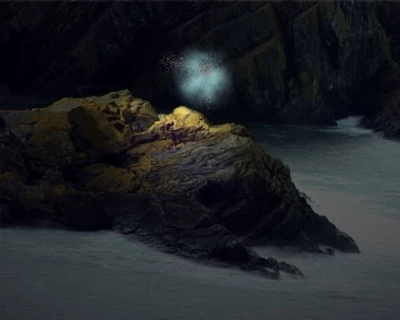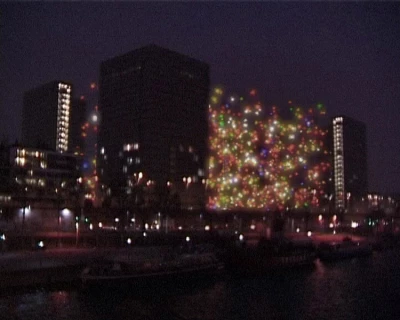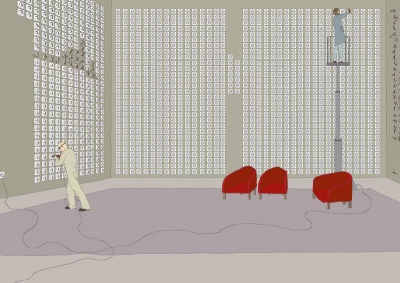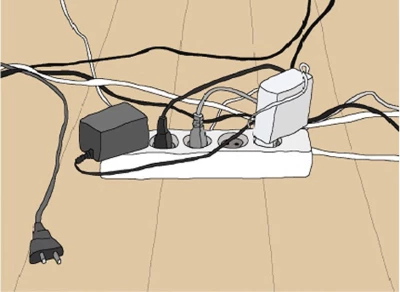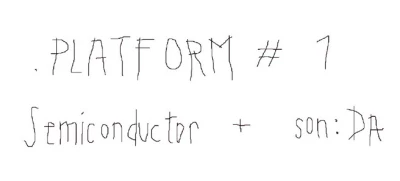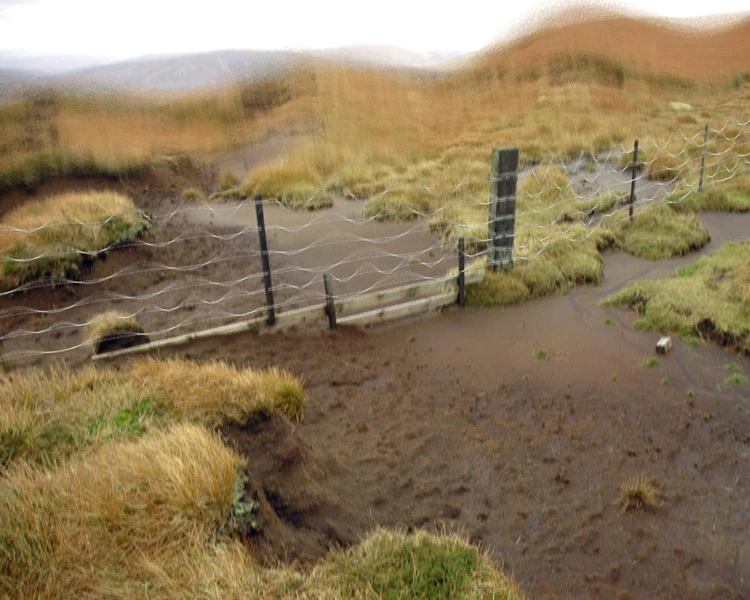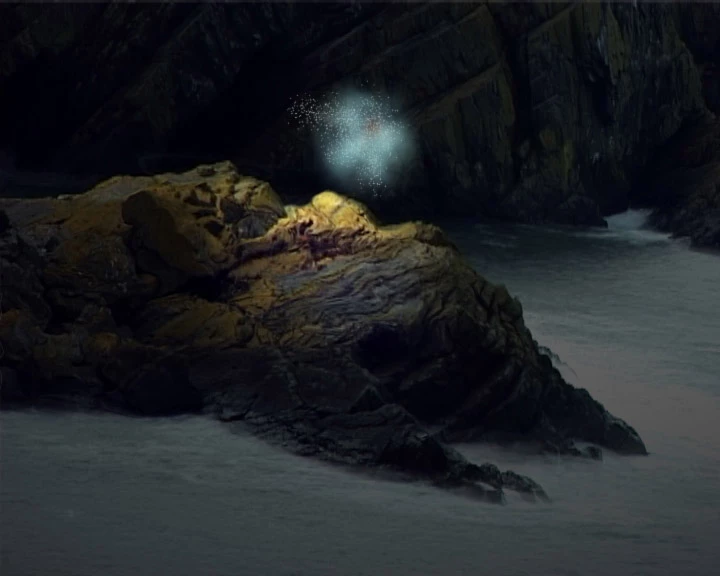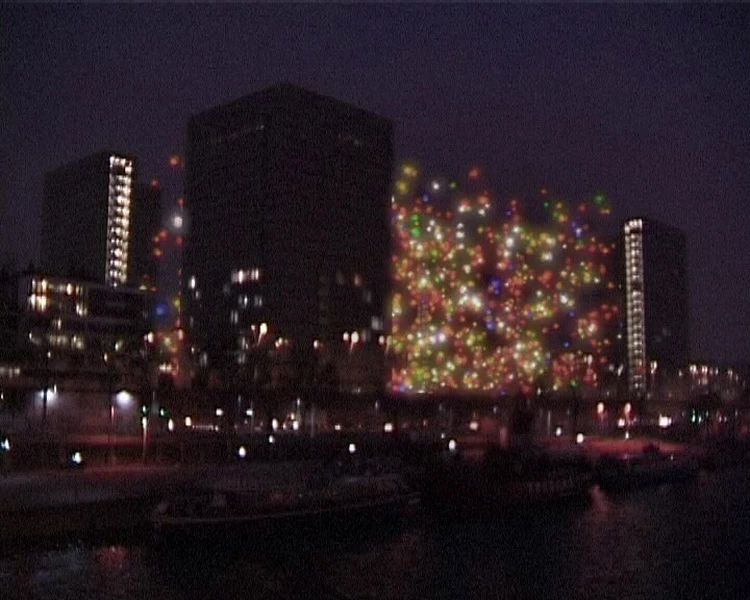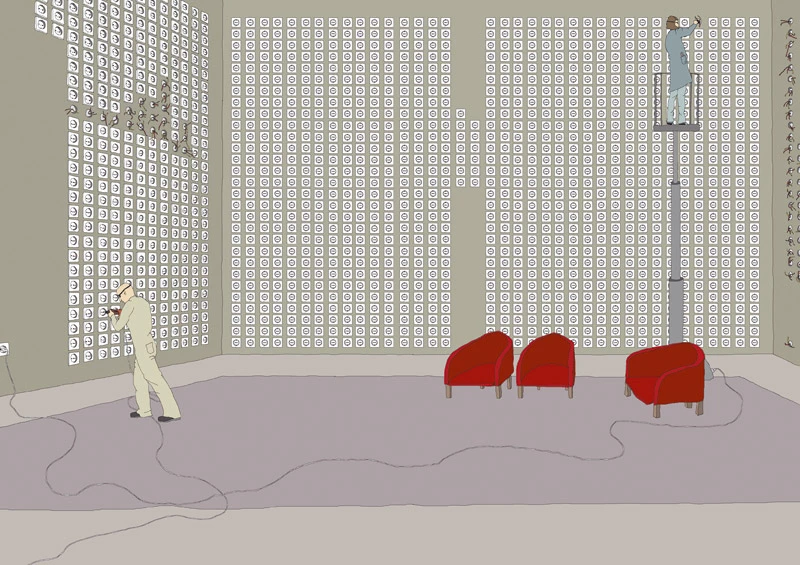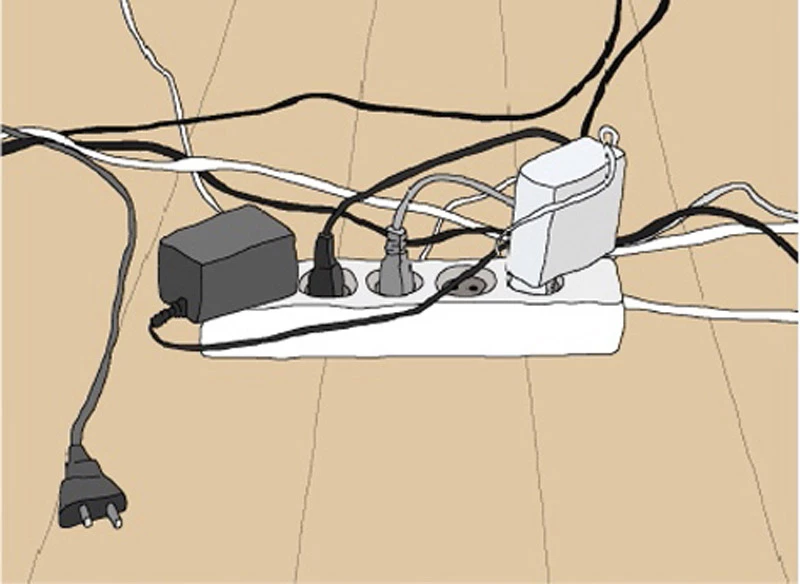Semiconductor e son:DA • Platform #1
The British artist duo Semiconductor and the Slovenian duo son:DA are exhibiting together in Milan for the first time, in a show curated by Chiara Agnello. Not so much a double solo exhibition, but rather—as the title suggests—a platform to encourage collaboration. The exhibition space at Careof is presented as a neutral container where a single, large composition can emerge: the digital prints by son:DA, which depict a space crowded with electric wires, cables, hardware components, and magnetic fields, as in the series Room (2004–2005), interact with the continuous flow of image and sound generated by Semiconductor. Among their most recent videos, they are presenting in Milan 200 Nanowebbers (2005), a hypothetical journey into microtechnology, and All the Time in the World (2005), a fascinating attempt to “reanimate” the landscape by combining audio recordings of an eruption of Mount Etna with images of cliffs and beaches formed by the movement of tectonic plates.
The intersection of practices and techniques is one of the most interesting elements that unites the approach of both groups. They both explore those border zones between image and sound, and more broadly between art and live media, with a keen eye toward other fields such as science—Semiconductor have recently completed a residency at the Art and Space Science, Berkeley Space Sciences Lab (USA).
Both Semiconductor and son:DA engage with technology by establishing a form of collaboration with the machine. In both cases, there is a dimension of tension between the purely digital, analog procedures that involve an element of chance, and the use of error as a co-producer. “We spend a lot of time removing the computer’s default settings that try to keep things ‘realistic’ and ‘clean’,” note Semiconductor. In their videos—or sound films, as they prefer to call them—the British artists reveal systems of chaos, emphasizing the temporal and ephemeral nature of the physical world, of the city, and of the ever-changing landscape. In these explorations, sound plays a central role, becoming a tool that investigates and controls the process of image generation.
Similarly, son:DA use mouse and software like Photoshop to draw in their large plotter prints, where the line, when magnified, reveals its fragmented and pixelated nature. Even in their installations, the Slovenian duo appropriates materials such as cables and plugs to generate chaos and to incorporate existing objects and structures.
Bio
Semiconductor: Ruth Jarman (Fareham, 1973) and Joseph Gerhardt (Oxford, 1972). Collaborating since 1997
2005: Tate Britain, London; Gymnasium Art Gallery, Berwick; The National Gallery of Australia, Canberra; Museum of Contemporary Art, Lyon; Transmediale, Berlin.
2004: The British Council, Jerusalem; Worm - Computer Cinema Festival, Rotterdam; Electroscape, Montpellier; Scratch, Lightcone, Paris; Sonar, Barcelona; ZKM, Karlsruhe.
2003: ICA, London; Royal College of Art, London; Venice Biennale; Experimenta, Melbourne; Netmage Live Media Festival, Bologna.
son:DA: Metka Golec (Maribor, 1972) and Miha Horvat (Maribor, 1976). Collaborating since 2000
2005: Museum of Modern Art, Ljubljana; Mario Mauroner Contemporary Art, Vienna; Porschehof & Kunstverein, Salzburg; Biennale of Graphical Arts, Ljubljana; Turner Contemporary, Margate.
2004: Kibla.Kibela, Maribor; Gallery Meduza, Koper; Galerija Škuc – Ljubljana; musikprotokoll am Steirischeherbst, Graz; Institute for Contemporary Art, Sofia; MACRO, Rome; Tate Modern – London; Contemporary Art Museum St. Louis, USA; Stedelijk Museum, Amsterdam.
critical essay
On the work of Semiconductor and son:DA
By Chiara Agnello
Semiconductor and son:DA, the former British, the latter Slovenian. The first active since 1997, the second since 2000. Formed in different contexts, Ruth Jarman and Joseph Gerhardt on one side, and Metka Golec and Miha Horvat on the other, both chose a name that alludes to investigation, transfer, and the reworking of data. What they share is an approach that moves toward the intersection of practices and techniques. Explorers of the boundaries between image and sound, between art and live media, between the abstract and the figurative, between the spontaneous and the pre-programmed, Semiconductor and son:DA, in their use of “new technologies,” give life to an artistic practice that involves collaboration with the machine. In both, there is a dimension of tension between the purely digital, analog procedures that imply randomness, and the use of error as a co-producer.
“We spend a lot of time removing the computer’s default settings that try to keep things ‘realistic’ and ‘clean’,” note Semiconductor. In their videos and sound films—as they often prefer to call them—the British artists reveal systems of chaos, emphasizing the temporal and ephemeral nature of the physical world, of the city, and of the ever-changing landscape. In these explorations, sound plays a central role, becoming a tool that controls the image-generation process.
Similarly, son:DA use the mouse and software like Photoshop to draw in their large digital prints on canvas, where the mark, when magnified, reveals its fragmented and pixelated nature. In their installations, the Slovenian duo, through the use of primarily electric materials like cables and plugs, appropriates existing objects and structures to generate chaos and create zones of tension within a given environment.
Platform #1 offers the opportunity for a true dialogue between the work of Semiconductor and that of son:DA. The exhibition space at Careof is permeated by a tension, a creative chaos in which both urban architectures and the natural landscape take part, as portrayed in the videos by Semiconductor and the digital prints on canvas by son:DA.
Semiconductor’s work initiates a journey that evolves from the micro dimension of 200 Nanowebbers (2005), through Linear (2001), which speaks of pre-existing energies and forces, referencing String Theory, and then moves through Inaudible Cities (2002), where buildings seem to evolve according to their own logic.
It is in All the Time in the World (2005) that the imagined urban landscape gives way to an opening toward the natural landscape. Here, nature too becomes part of the same process.
This evolution of image and sound, this play of scales, of transitions from micro to macro dimension finds a dialogue with the work of son:DA. The intervention of the Slovenian duo succeeds in inserting itself into that continuous flow, creating pauses charged with tension and potential. In their large compositions, the Slovenian artists reintroduce the human element—which is absent in the work of Semiconductor—always represented in a space crowded with electric wires, cables, hardware components, and magnetic fields, as in the series Room (2004–2005). Their gaze is irreverent. They emphasize rather than deny, almost as if peering into that urban reality observed from a bird’s-eye view in Semiconductor’s Inaudible Cities. son:DA depict situations of apparent calm, perhaps moments just before sudden upheaval.
